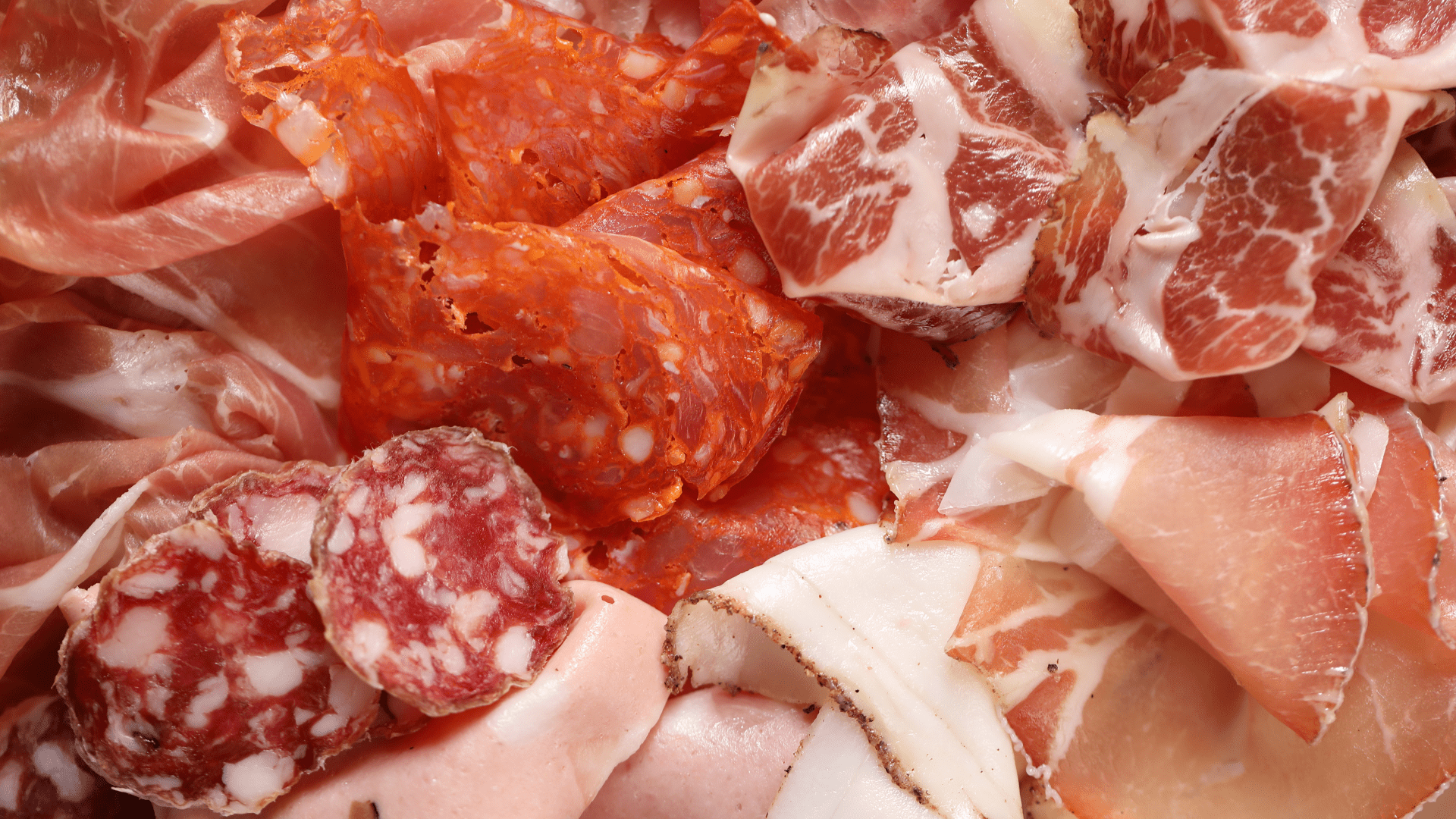
Cold Cuts and Cured Meats
Cured Meats and Cold Cuts are raw or cooked meat foods, processed with the addition of salt, animal fat, herbs and spices. They can come from the meat of farm animals or they can be of game (wild boar, deer, roe deer), the most common type are the cured meats based on pigs.
Subsequently, when the animal has reached an optimum weight/age ration, the feed must be based on natural food, and slaughter takes place is approved public or private slaughterhouses.
Each category of sausage receives different care depending on the type.
Pork is certainly the most used animal for the production of cured meats.
In the case of sausages, the production stages are divided into:
- Farming;
- Reception of raw materials;
- Refrigerated storage;
- Selection, trimming and cutting of meat;
- Milling;
- Mixing of ingredients;
- Filling (only for sausages);
- Desaeration and binding;
- Smoking;
- Drying;
- Seasoning.
Italy boasts PGI and PDO cured meats, these awards a guarantee of quality for the consumer.
Among the most famous Italian PDO branded cold cuts are: Prosciutto di Modena, Prosciutto di Parma, Prosciutto San Daniele, Capocollo di Calabria, Salame Piacentino, Salsiccia di Calabria.
The PGI brands are the Bresaola della Valtellina, the Coppa di Parma, the Mortadella di Bologna, the Prosciutto di Norcia, the Salame del Piemonte, the Speck dell’Alto Adige and the Zampone di Modena.
In 2020, 1,093 million tonnes of cured meats were produced in Italy. Cooked ham is the most consumed type consumed in the country, with a share of 27,2% of the total. In second place is the raw ham with 21,8%, followed by mortadella and sausage at 19%, salami at 8,1% and bresaola at 2,5%.
The export of cured meats has suffered a decrease of 7,2% in volumetric terms, but the value has grown of 2,5%.
Process and Product Innovation
The shift to the Industry 4.0 is a moment of deep change and innovation capable to disrupt all the sectors.
The industry 4.0 is considered as a new Industrial Revolution that appears to be even more disruptive of the previous ones. It is seen as such because it is born from the convergence of the IT and OT technologies to create a digit...
Supply chains involved:
Plant-based Beverages Coffee Cereals Chocolate Canned Foods Beer Dairy Products Nuts Food Supplements and Nutraceuticals Milk Plant oils Fruit and Vegetables Pasta Meat Baking products Sweet products Rice Cold Cuts and Cured Meats Winery